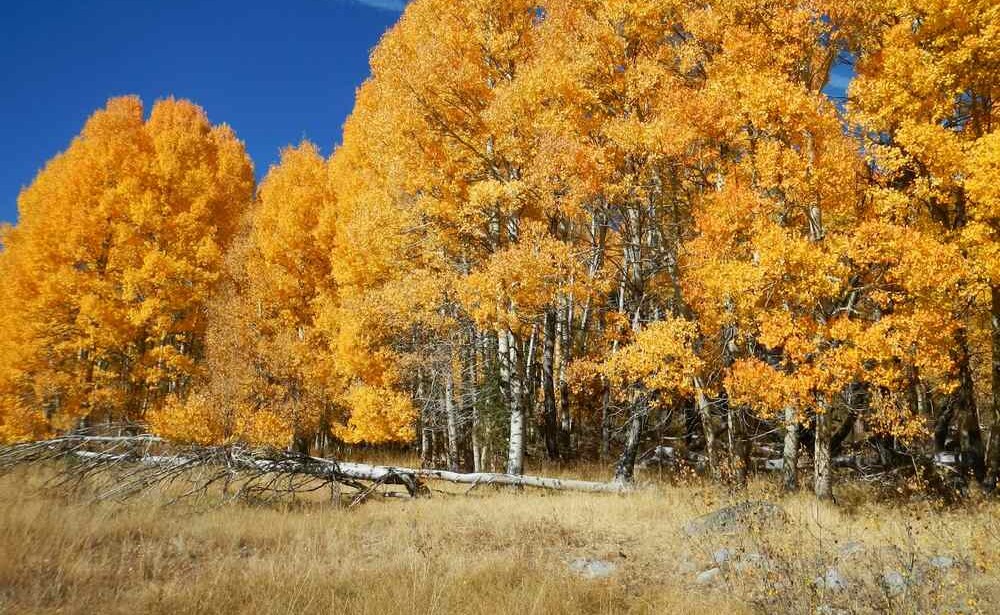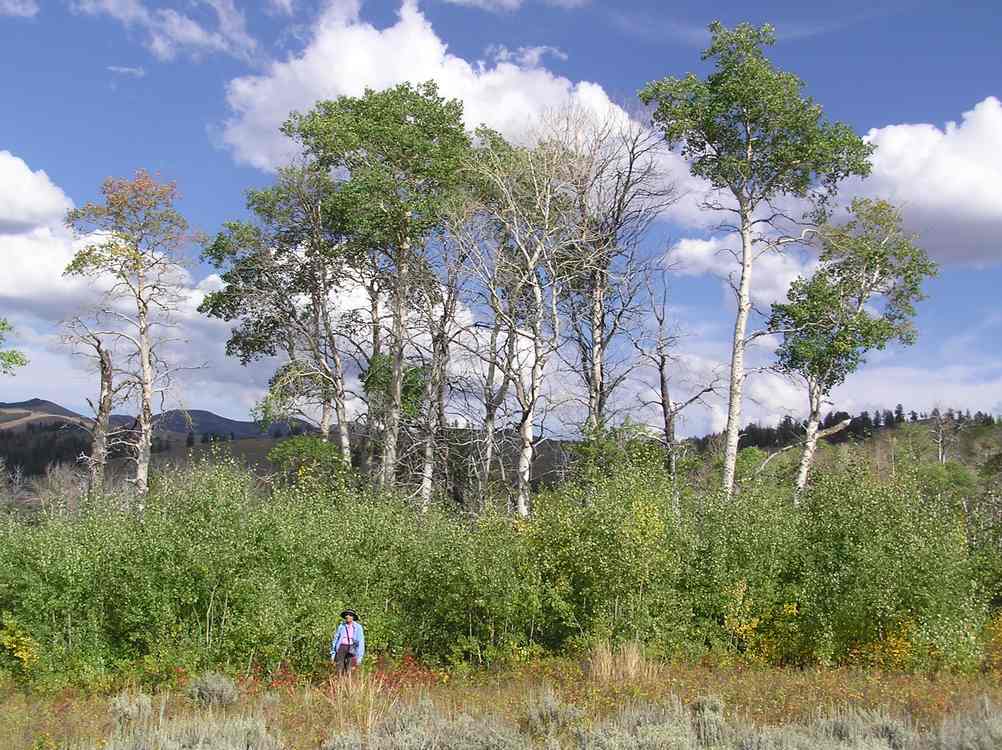 Kimberly Earp, via Unsplash
Kimberly Earp, via Unsplash
For the first time in over 80 years, young quaking aspens are growing tall and broad in the northern reaches of Yellowstone National Park.
The unexpected return of this iconic tree of the West is now being attributed to the return of another Western icon: the gray wolf.
What exactly do aspen trees and gray wolves have in common? Aside from the color of their fur and bark, it’s the two species’ relationship with another of Yellowstone’s famous residents: the elk.
In a paper published in the journal Forest Ecology and Management, scientists at Oregon State University have determined that it’s the wolves hunting of the elk which has allowed these tree saplings to grow up, and here’s how they know.
Gray wolves were once abundant in the park, but were extirpated from the area in the 1930s. Without these apex predators, elk populations ballooned, reaching 17,000 in the park by 1995.
The elk eat emerging aspen sprouts, especially in late winter, preventing any new growth from replenishing aspen groves.
“[The aspens] would grow new sprouts, but then the sprouts couldn’t get any larger [because of the elk],” the study’s lead author Luke Painter, an ecologist at Oregon State University, told Oregon on the Record. “The stands basically had older trees … and those were dying out, and then there wasn’t any new growth underneath, of young aspens, to replace those older trees.”
WHOLE-OF-ECOSYSTEM STORIES: ‘Change Has Been Amazing’ For Depleted Mountain: with New Vegetation Comes Deer, Pumas, Andean Bears
In 1995, gray wolves were reintroduced to Yellowstone for the exact hope that they would thin out the numbers of grazers, which they did.
 A study scientist standing in front of new aspen stand growth – credit, Luke Painter, OSU.
A study scientist standing in front of new aspen stand growth – credit, Luke Painter, OSU.
Painter and his team examined 87 aspen stands in the northern areas of the park in 2012. They then returned in 2020 and found that 43% of the sample sites had new, young trees with trunks that were at least two inches in diameter at chest height—something researchers hadn’t seen since the 1940s.
WOLVES: Birth For World’s Critically Endangered Red Wolf Brings Rising Population to Nearly 250
Aside from height and girth, there was also a 152-fold increase in the number of aspen saplings between the year of the wolves’ return and 2020. The return of these beautiful trees will likely be good news for a variety of smaller critters, like woodpeckers and wrens that make their homes in hollowed-out cavities in aspen trunks, as well as beavers which have a preference for the aspens when making dams.
It’s what’s known in ecology as a “trophic cascade”—the knock-on effects across the food web when keystone species, in this case the wolf, are removed.
“The reintroduction of large carnivores has initiated a recovery process that had been shut down for decades,” says Painter in a statement. “This is a remarkable case of ecological restoration… Wolf reintroduction is yielding long-term ecological changes contributing to increased biodiversity and habitat diversity.”
SHARE These Long-Term Changes From Wolves’ Famous Reintroduction To Yellowstone…
